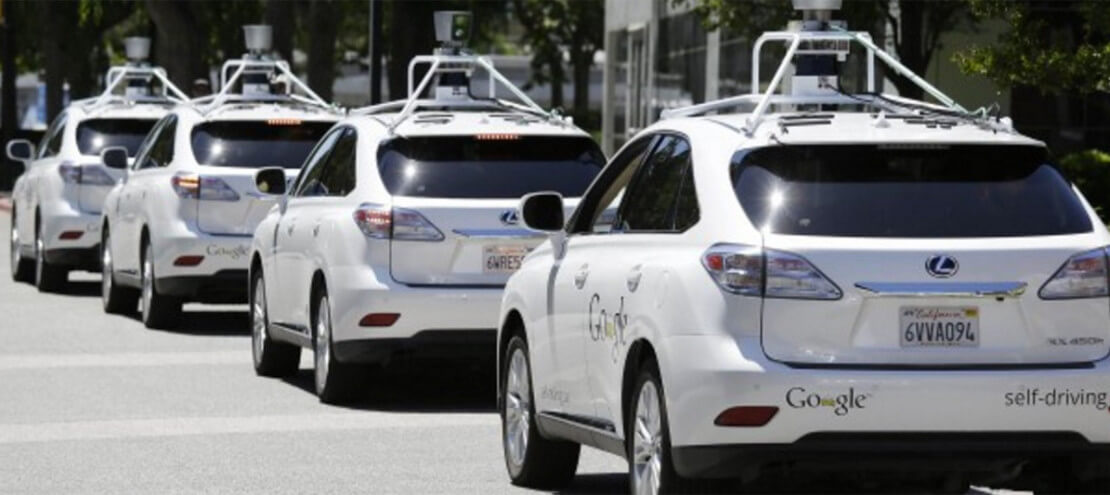
Imagine sitting in your car, coasting along the freeway at a moderate 150 miles per hour in an endless procession of automobiles with a millipede’s distance between bumpers. You yawn and wipe the sleep from your eyes as your car seamlessly exits the highway and spits you out at the steps of your office before zipping off into the distance. The way autonomous vehicle technology is progressing, this might be your commute someday.
On April 2, 2015, a self-driving car made history—Lewis and Clark style—by navigating across the contiguous United States. The autonomous auto traveled 3,400 miles from San Francisco to New York on a nine-day road trip—without even breaking to take selfies at the Grand Canyon. Sponsored by auto tech company Delphi, the robo-car handled 99% of the driving and only needed its human cargo to take over intermittently when off the highway. Not bad for a new driver.
The success of Delphi’s driverless odyssey highlights how far autonomous tech has come and how close we are to a world where “designated driver” will only refer to your favorite golf club. Google is certainly motoring in that direction. At any given time, the tech giant has about a dozen of its self-driving cars roaming the roads of California and Nevada, and as of this year, Google’s self-driving cars have collectively logged 1.7 million miles.
The latest self-driving prototype from Google is a globular two-seater that looks like something George Jetson might fly to the space-mall to purchase space-khakis. One of the vehicle’s most impressive innovations is a sensor to detect and respond to cyclists’ hand signals. This is pretty impressive, considering that most human drivers don’t even respond to cyclists’ hand signals.
Along with Delphi and Google, carmakers and tech companies around the world are racing to produce their own self-driving cars: Mercedes is making one, Audi’s making one, Apple’s making one, and it’s only a matter of time before Netflix releases its version with Frank Underwood’s southern drawl for voice command.
Of course, self-driving cars can’t hit the streets until given the green light from state legislation, but legislators across the country are shifting policy gears to allow them.
So far, laws legalizing driverless vehicles have passed in California, Nevada, Florida, Michigan and Washington D.C. The president himself could cruise down Pennsylvania Avenue in a self-driving limo if he so desired—preferably accompanied by a self-driving security escort.
Some experts predict that self-driving cars will lead to a major shift in society. They might even spell the end of individual car ownership. Today, cars spend 95% of their time parked and collecting dust. Self-driving cars, on the other hand, could be shared by the public and be in constant motion, picking up and dropping off new passengers who summon them from their phones. Unsightly parking lots across the globe could be demolished and replaced with public parks, solar panels, or affordable housing complexes for unemployed taxi and Uber drivers.
The benefits of self-driving cars are endless: children could travel to and from school or daycare without their parents. Elderly folks unable to drive could be chauffeured to any buffet in town in time for the early bird special. And superior driving machines would allow speed limits to be raised and road space to be maximized without additional risk.
Autonomous cars could also be a blessing for the environment. As cars are shared more often, fewer need to be on the road, reducing carbon emissions. When self-driving technology is perfected and collisions are no longer a concern, cars could be significantly lightened—and why weigh down a car with heavy glass windows when no one needs to look outside? Lighter cars would substantially increase energy efficiency. That’s not to mention all the energy that’d be saved when people no longer have to circle the block a dozen times to find a parking space. One study from MIT found that in congested urban areas, a whopping 40% of all gasoline cars use is spent while drivers look for parking.
And just think how much money NASCAR could save without having to pay its drivers—self-driving cars will endorse Bud Light for free!
Tesla CEO and Tony Stark-wannabe Elon Musk compared the evolution of car technology to that of elevators. “They used to have elevator operators, and then we developed some simple circuitry to have elevators just automatically come to the floor that you’re at,” said Musk. “The car is going to be just like that.”
Aside from the plethora of benefits already mentioned, self-driving cars have the potential to be far safer than their human-driven predecessors. According to the National Highway Traffic Safety Administration, 94% of all crashes are the result of driver error. This raises the question: should drivers still be allowed to drive?
Some predict that manually driving a vehicle will eventually be outlawed, given its inherent risk. In the not-too-distant future, we might only see human-driven cars in museums, or in the garages of hipsters who think they’re ironic. Hulu founder Jason Kilar put it this way: “Our grandchildren and certainly our great-grandchildren are going to think that we were insane to have humans driving cars on roads.”
Of course, there are still thorny obstacles and legislation to overcome before any of this happens, including questions of liability in the event of an accident by a self-driving car. Or questions of liability in the event that self-driving cars become self-aware and take over the planet. Google came under scrutiny recently when it revealed that its self-driving cars have been involved in a total of 11 minor accidents so far. This goes to show that—just like all of us except Beyoncé—they’re not totally infallible.
The future of self-driving cars may be murky, but one thing about their eventual commercialization is certain: never again will that annoying friend ask you to drop him off at the airport—his car will do it for him! This, in and of itself, makes the outlook for self-driving cars incredibly exciting.